Warm Up for Athletes: Starting a Great Training Session or Practice
To build the perfect training program, strength and conditioning professionals make many tailor-made considerations for their athletes.
Settling on the right exercise

selection, training volume, and load volume can be painstakingly time-consuming and difficult. However, to execute the perfect training program, a perfect warm-up must also be present. The warm-up is every bit as important as the aforementioned program design qualities. However, far too often it is designed haphazardly, executed poorly, or worse yet, skipped over altogether. Without a well-
constructed warm-up at the onset of a training session, athletes will likely not reach their potential training ceiling for that particular session, and even more importantly they are now at an exceedingly higher risk of injury. Designing and carrying out an effective warm up is crucial to the success of any training program.
Warm Up Defined
The National Strength and Conditioning Association defines the warm-up as being composed of preparatory exercises performed prior to engaging in activities that are more vigorous in nature. Warm-ups are designed to prepare the skeletomuscular and the cardiovascular systems for the increased demands brought about by training and competition. There are 3 types of warmup classifications, general, specific, and passive. Each can be performed separately or as a stand-alone, however, they are commonly, and more effectively, used in conjunction with each other.
General Warm Up:
Warming up through general/nonspecific movements.
Specific Warm Up:
Warming up using very similar biomechanics that will be used in subsequent/more strenuous activities or exercises.
Passive Warm Up:
Warming up with the assistance of an external means. (Ex. Foam rolling, SMR apparatuses, heating pads, buffers)
Effects of a Warm Up for Athletes
The main goal of a warm-up is to prepare the body for the demands that will be placed upon it during subsequent exercise or competition. By properly preparing the body for exercise or competition, the athlete can experience increased performance outputs, increased neural priming and focus, and a decreased risk of injury. These benefits are due to a multitude of responses transpiring at the physiological level. The effects of a warm up are commonly broken down into two categories, temperature related effects and non-temperature related effects. With these physiologic responses in place, the athlete can reap the big picture benefits such as increased performance and decreased risk of injury.
Temperature Related Effects
Non-Temperature Related Effects
Increased muscle temperature causing more forceful contractions and quicker relaxations
Increased blood flow to muscles
Increased blood temperature allowing for more oxygen to be unloaded to working muscles
Increases in strength and power output due to Post-Activation Potentiation
Improved synovial fluid distribution allowing increased ROM around associated joints
Improved psychological effects and increased preparedness
Warm-up Design Considerations
Similar to training programs, warm-ups should not all be designed the same or thought of in a “one size fits all” manner. Designing the warm-up should be predicated upon certain factors such as:
The activity/training the athlete is about to engage in (ex. Game, scrimmage, practice, lifting session, conditioning etc.)
The sport the athlete plays
The position within the sport
The age and/or gender of the athlete
The training age of the athlete
The current training phase of the athlete (ex. In-season, Off-season, Pre-season, etc.)
Time allotment for the session
Availability of space and/or various apparatuses
Temperature of the environment the game/practice occurs
Once these factors are addressed, more detailed and physiological-based considerations can be made to fully optimize the warm-up for the athlete. For instance, a pre-practice warm-up will look different than a pre-workout warm-up for the same athlete. These specific details may include identifying:
Associated joints and muscles
Necessary mobility level
Associated planes of motion
Speed of movements
Intensity of exercises
Basic Warm-up Guidelines
While warm-up design should be approached in a similar manner as putting together a needs analysis for resistance training or aerobic training, there are some general guidelines that can be set in place. These guidelines can serve as the foundation of a warm-up, and from there it can be tailored to suit specific needs. Basic guidelines include:
Duration of approximately 5-20 minutes
Beginning is based around a “General Warm-up
Typically cardiovascular activity
Duration is roughly 5 minutes
Move toward a “Specific Warm-up”
Consists of movement prep exercises
Duration of 5-15 minutes
Blend of dynamic movements, mobility exercises, and short static stretches
Begin the warm-up at a low intensity and progress to moderate and possibly even high intensity as it progresses
Movements and exercises begin from general to more specific
Ex. Jogging a lap → high knees → A-Skips
Have specific movements or exercises last 10-20 yards or for 5-10 reps
Here is an example of a thorough, general warm-up for athletes with basic stretches –
These movements do not have to occur in this exact order, and other movements can easily be inserted into this routine, but you can see how it progresses from low-intensity to slightly higher-intensity and lasts long enough to increase body temperature. With younger kids, you can keep it more interesting by adding sport-skills like dribbling/shooting/passing or games like tag, knee tag or short obstacle courses. Variations of each movement can also be used such as performing high-knees and butt-kickers laterally or in place rather than the standard straight-ahead version. With very young athletes (under 8), use the warm-up to build coordination and body awareness.
Here is an example of a quick, general warm-up for athletes that can be done in place when you don’t have much space (i.e. a team training in a hallway or small weight room) –
This warm-up could be used before a lifting session. Each of these exercises can also be inserted into a general warm-up for athletes.
Once a general warm-up like these is performed, it’s time to move on to more specific movements. For example, build-up sprints for a speed training session, low-level plyometrics (i.e. line hops or polo jumps) for a plyometric workout, or ladder drills for an agility session. This is also the time to incorporate more sport-specific drills if preparing for a sport practice. This could include dribbling, shooting, passing and catching or corrective exercises.
The point is to increase core temperature, move the body through all planes of motion, and prepare the body for more intense activity.
Putting it all Together
The most important detail when putting together a warm up for athletes is to simply make sure the athlete is actually performing one. It’s possible to ask older athletes to perform part of their warm-up before you even start your session, but younger athletes should usually be taken through most of this. Certain situations such as competition, practice or a difficult off-season lifting session will require greater emphasis on the warm-up than a low-intensity, voluntary off-season workout. However, making sure that the athlete still does something with purpose is vital. Having set structure on days can be good for both coach and athlete, but always make sure you can be fluid and adapt when needed. It’s not necessary to think of a new warm-up before every lifting session, but being able to add movements or emphasize different body parts will almost surely occur as the athlete faces the typical tribulations that come about as the season unfolds. Following set guidelines but putting your own style on it as a coach is the best way to design a warm-up.

Joe Powell is an Assistant Strength & Conditioning Coach at Utah State where he is responsible for football and several other sports. He was formerly an Asst. S & C Coach and Adjunct Faculty Member at Central Michigan University. Joe is a regular contributor to the IYCA Insiders program and has been a huge part of bringing the Behind the Science series to the IYCA. Get more of Joe’s contributions in the
IYCA Insiders membership.
The IYCA’s Principles of Athletic Strength & Conditioning textbook covers the warm-up and many other topics in great detail.The PASC book includes contributions from 17 top professionals include Joe Powell. Click on the image below to learn more:
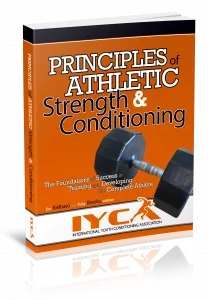
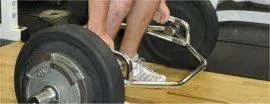
High School Strength Coach Certification
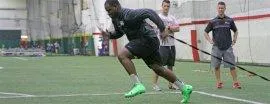
Certified Speed & Agility Specialist
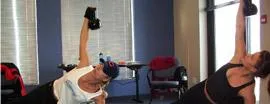
Kettlebell Instructor Course
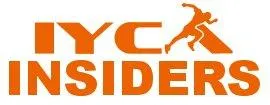
IYCA Insiders - Exclusive Access

Youth Fitness Specialist Certification
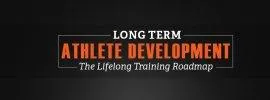
Long Term Athlete Development

Youth Nutrition Specialist Certification

Copyright © 2008 - 2025 International Youth Coaching Association. All Rights Reserved
|
|

